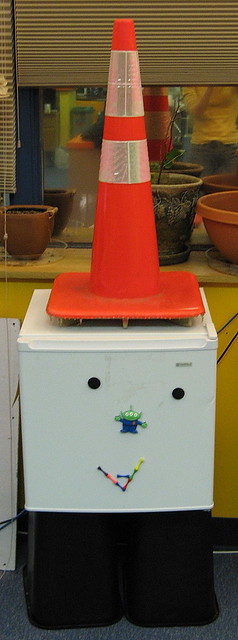When we think of the term “mobile” (as in mobile phones and mobile learning) we tend to imagine gadgets that we carry around with us, allowing us to do things like get connected to the internet, talk to each other, move our data from one place to another, and so on. However, according to some techie gurus, the future of “mobile” could be very different. They believe that in a few years time we might live in what they call “the internet of things”.
The idea is that, as micro-technology becomes more efficient and processors become cheaper, all sorts of household objects will have embedded network-enabled processors, giving them the capacity to access the internet and process information on our behalf. This means that, eventually, the material world we live in will become one big, interconnected place, bridging the divide between the real and virtual realms and, potentially, making smartphones, laptops, tablets etc. redundant. There won’t be a need to carry internet-enabled gadgets with us – the internet will be quite literally all around us.
Is this ever going to happen? Well, we’ve already developed things like internet TV sets (which are becoming fairly commonplace) as well as some flashier concepts, like remote controlled smart homes (allowing us, for example, to switch the heating on or off from work) and internet fridges (capable of placing a supermarket order on our behalf if we’re running low on yoghurt). These ideas have been around for a while, but they’re not quite taking the market by storm – I wouldn’t ditch your tablet just yet.
 |
| A smart fridge? Image: CC by saeru |
What is much more likely to become a reality in the near future is near field communication (NFC). Applied to mobile technology, NFC means that your mobile device will emit short-range radio frequency onto a nearby receiver (say, a tag with a small embedded circuit). When the waves bounce back from this object, they will carry information that can be read by your device, thus establishing a two-way communication system. The principle is similar to the technology used by contactless credit card payment systems and anti-theft electronic tags in shops. The key advantage of NFC is that, unlike talking fridges and super high-tech conservatories, NFC receivers are very cheap (a museum or classroom could easily afford to plaster the place with hundreds of NFC tags). The first NFC-ready phone was the Nokia 6131 (released in 2006), so NFC is not quite cutting edge as far as the mobile phone industry goes. However, the technology is now being backed by some big players, including Google Wallet (yes, that’s the same Google that owns and runs Android), so we can probably expect to see a lot of NFC coming our way soon.

No comments:
Post a Comment